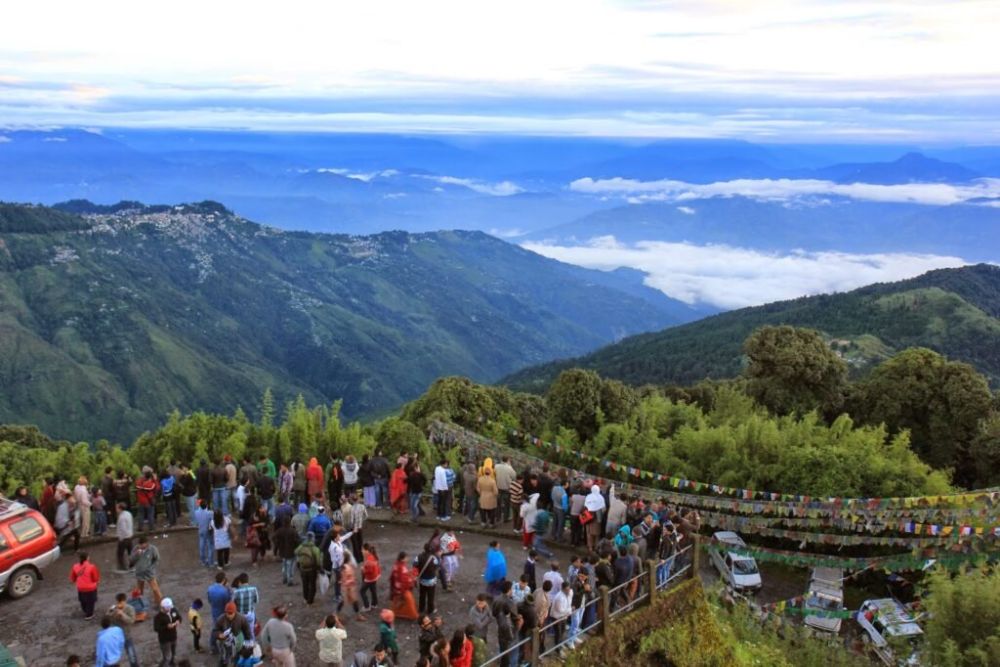

Tiger Hill, renowned for its spectacular sunrises over the Himalayan range, has been a crown jewel in the tourism landscape of Darjeeling, West Bengal, India. Nestled at an altitude of over 2,600 meters (8,500 feet) above sea level, this destination offers breathtaking views of the snow-covered peaks, including Mt. Everest and Kangchenjunga, the third-highest mountain in the world.
The history of tourism in Tiger Hill can be traced back to the British colonial era when Darjeeling was developed as a summer retreat for the British elite. The enchanting views from Tiger Hill made it a popular spot for sunrise viewings among those early visitors. By the late 19th and early 20th centuries, it had become an integral part of the Darjeeling experience for domestic and international travelers alike.
Realizing the significance of the panoramic views, authorities established several designated viewing points on Tiger Hill. These special platforms provided visitors with unobstructed views of the majestic Himalayas. Tourists often trek uphill in the early hours to capture the first rays of the sun hitting the snowy peaks.
Over the years, Tiger Hill has not only been a site for natural beauty but has also integrated with the local culture. Visitors get a glimpse into the rich heritage of Darjeeling through interactions with the local communities. The inflow of tourists has contributed significantly to the economic development of the region.
The nearby Ghoom Monastery, one of the oldest Tibetan Buddhist monasteries in the area, also draws visitors interested in spiritual and cultural aspects, thereby enhancing its reputation as a multifaceted tourism spot.
In recent times, tourism trends in Tiger Hill have evolved with advancements in infrastructure. The introduction of better transportation, such as the jeep services that operate from Darjeeling to Tiger Hill, as well as improvements in accommodation facilities, have made the area more accessible to a broader range of tourists.
With the rise in global environmental awareness, sustainable tourism practices are being increasingly adopted in Tiger Hill. Efforts are made to preserve the natural habitat while accommodating tourist activities, with a focus on minimizing environmental footprints.
The COVID-19 pandemic posed significant challenges to the tourism industry worldwide, including Tiger Hill. However, as travel restrictions have eased, there is a resurgence of interest, with health and safety protocols firmly in place to ensure the well-being of both tourists and locals.
Today, Tiger Hill stands not only as a testament to the enduring allure of natural beauty but also as an example of how tourism can evolve while respecting cultural heritage and environmental integrity. It continues to captivate the hearts of travelers who come from far and wide to witness the sublime sunrise and the grandeur of the Himalayas.